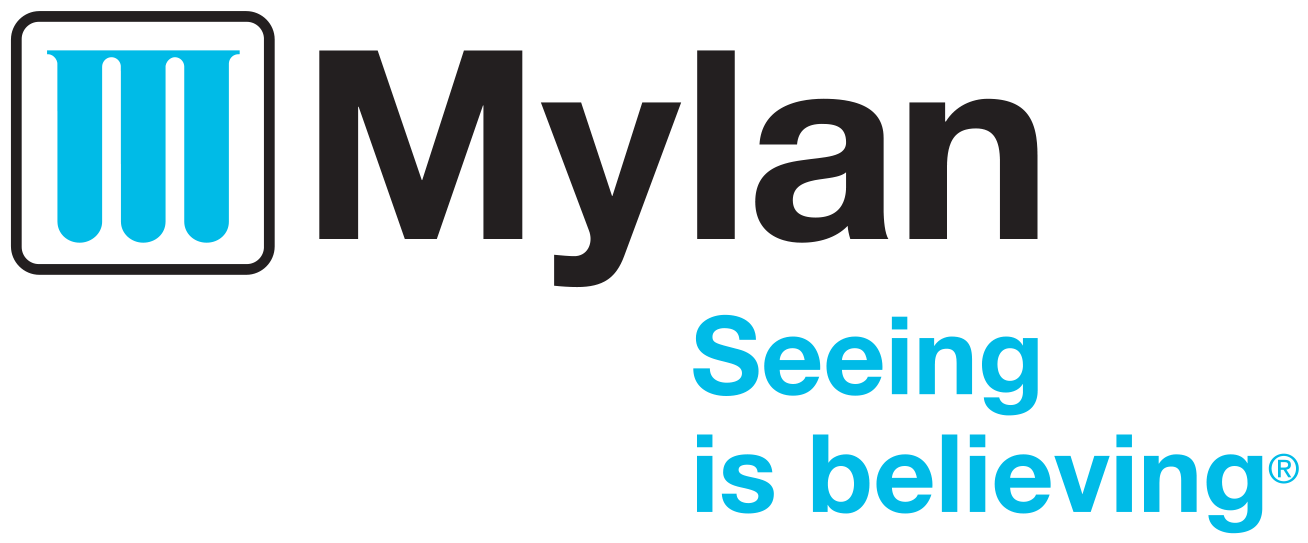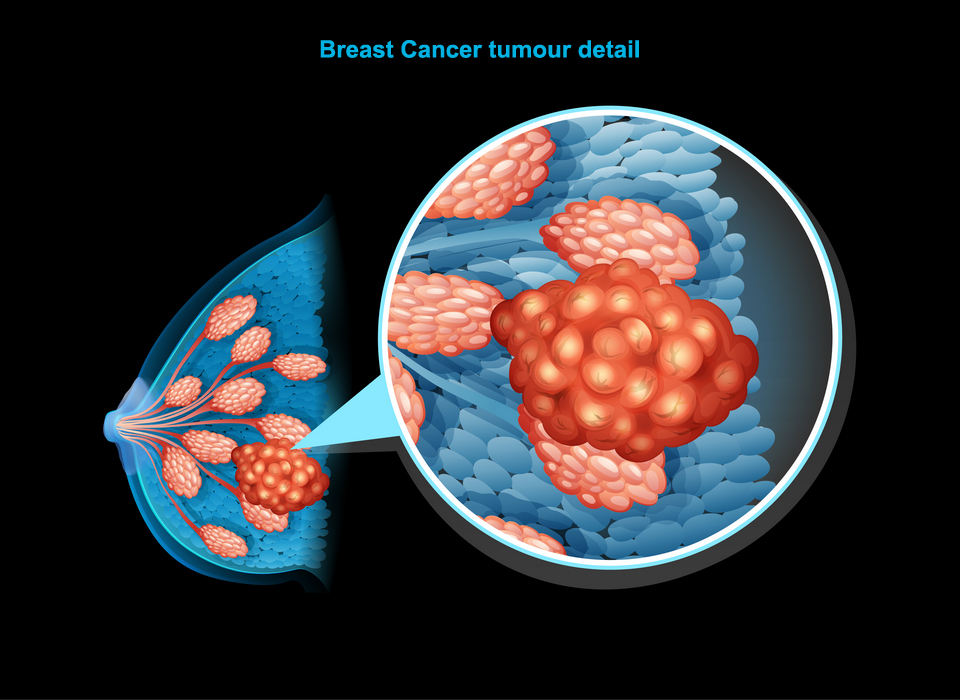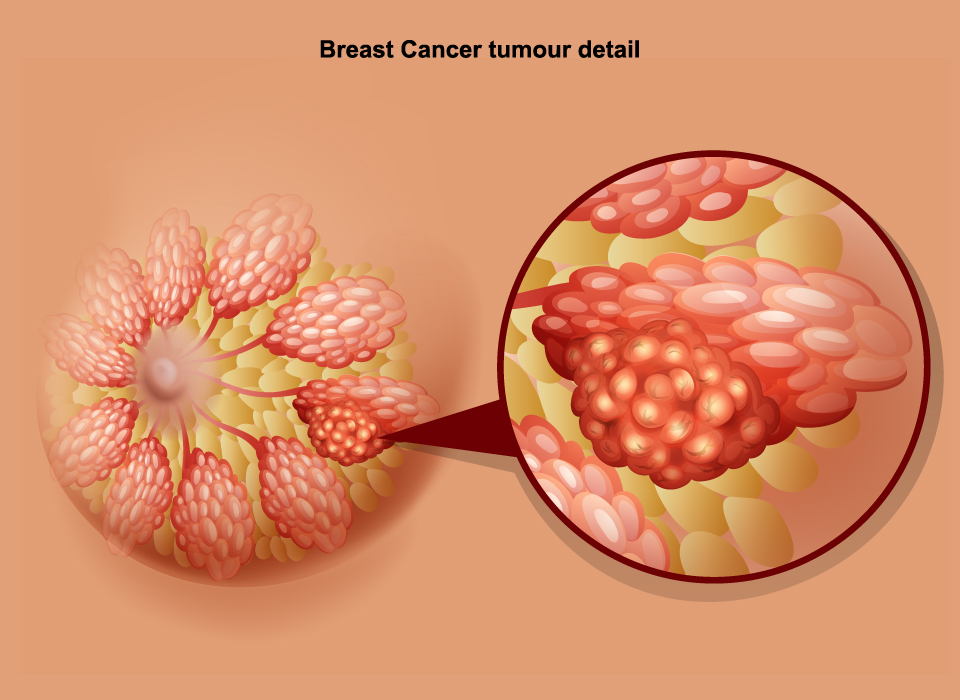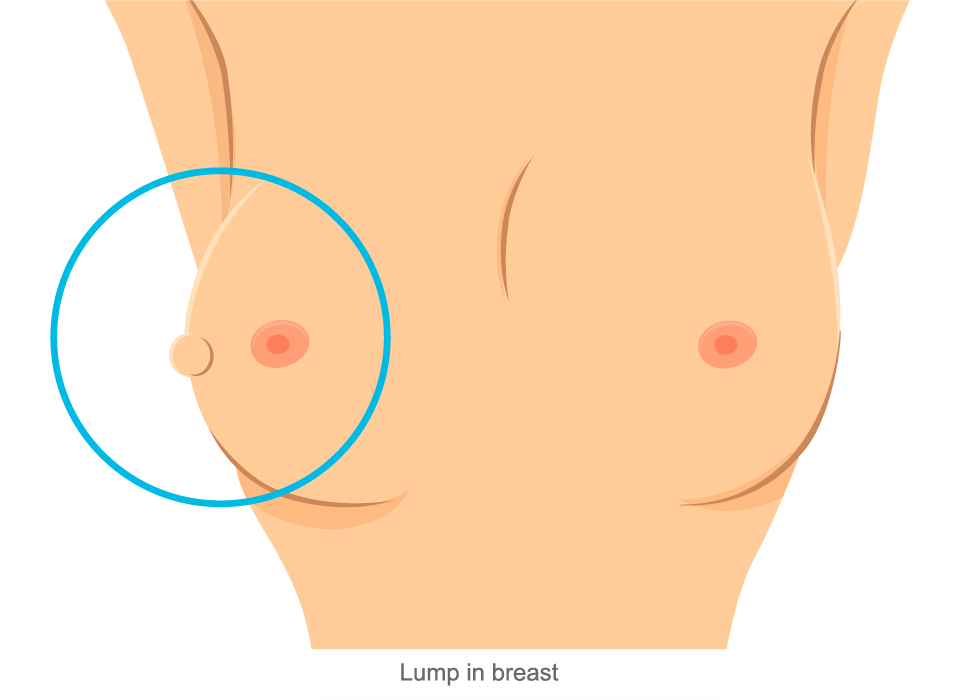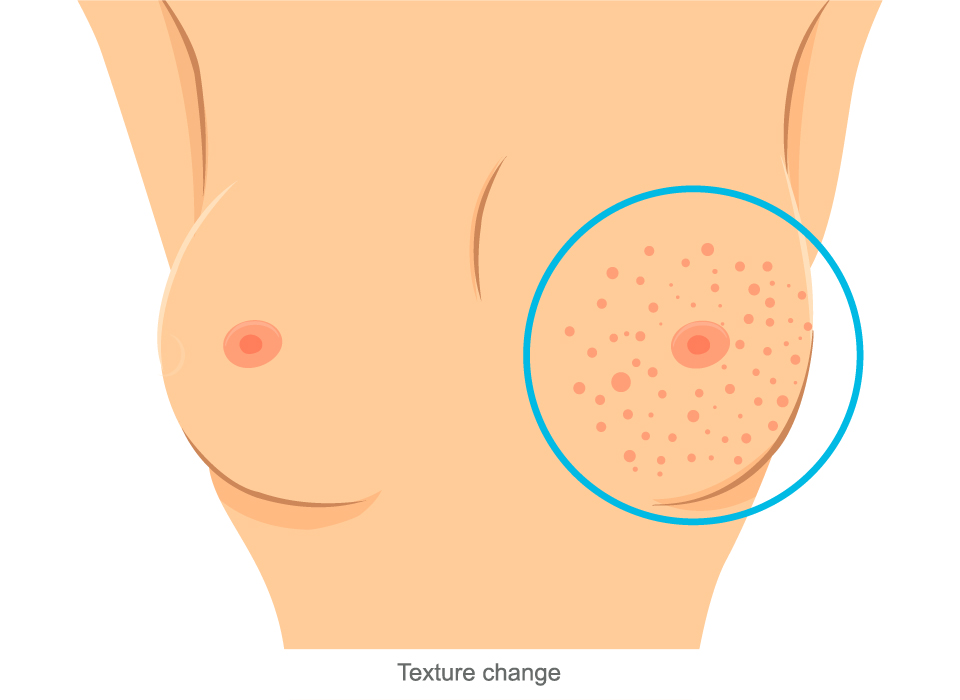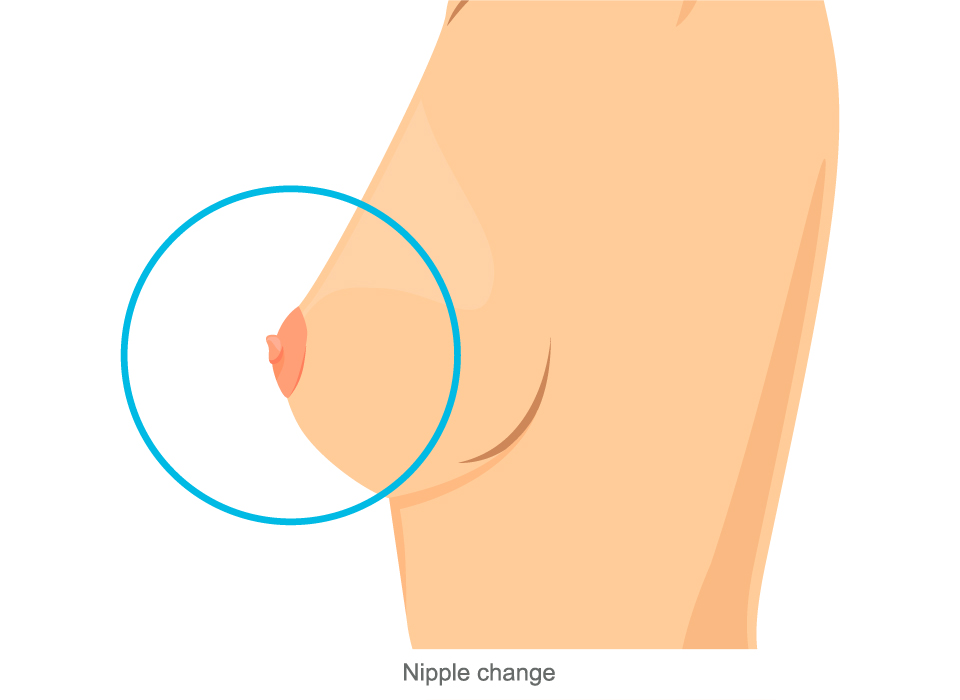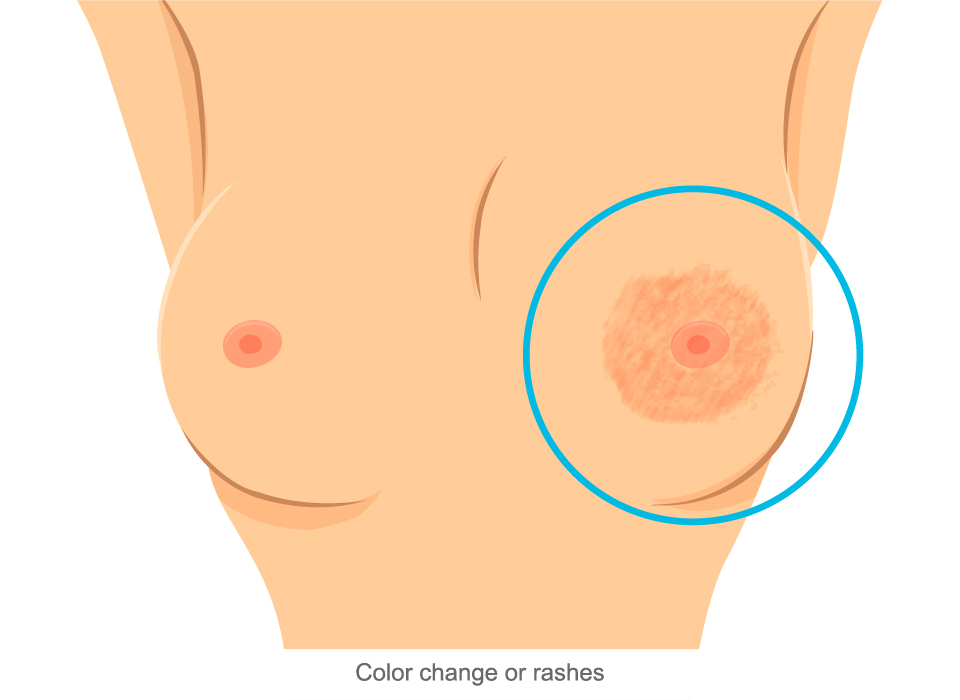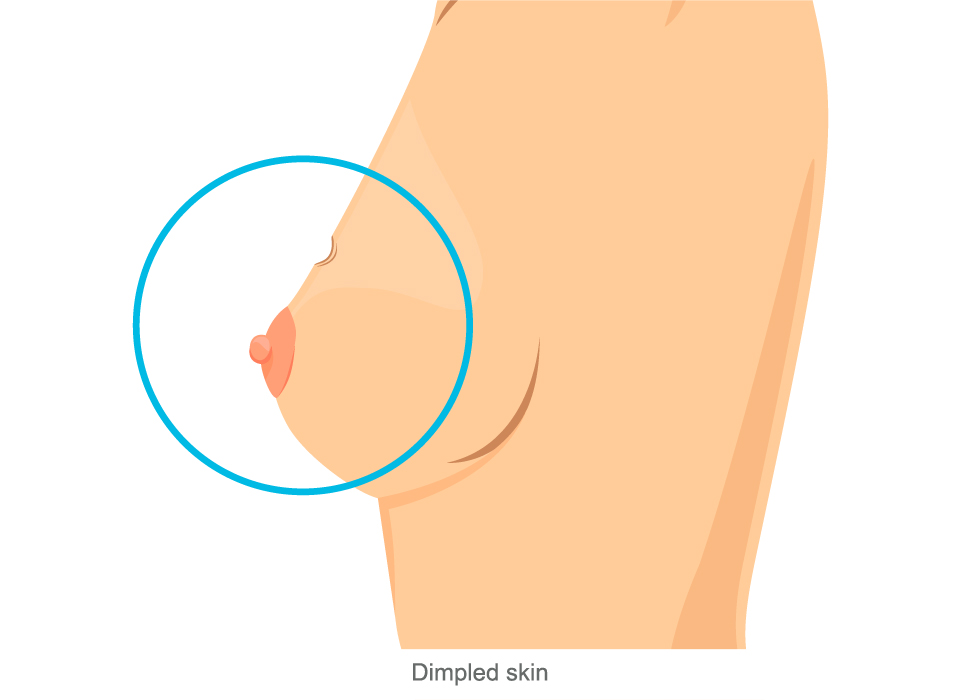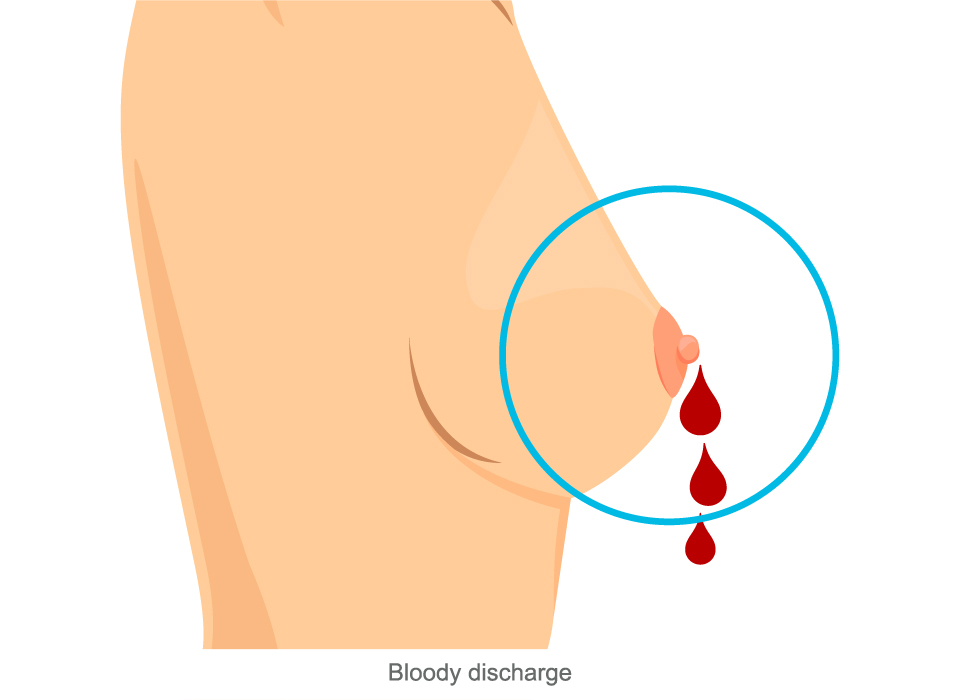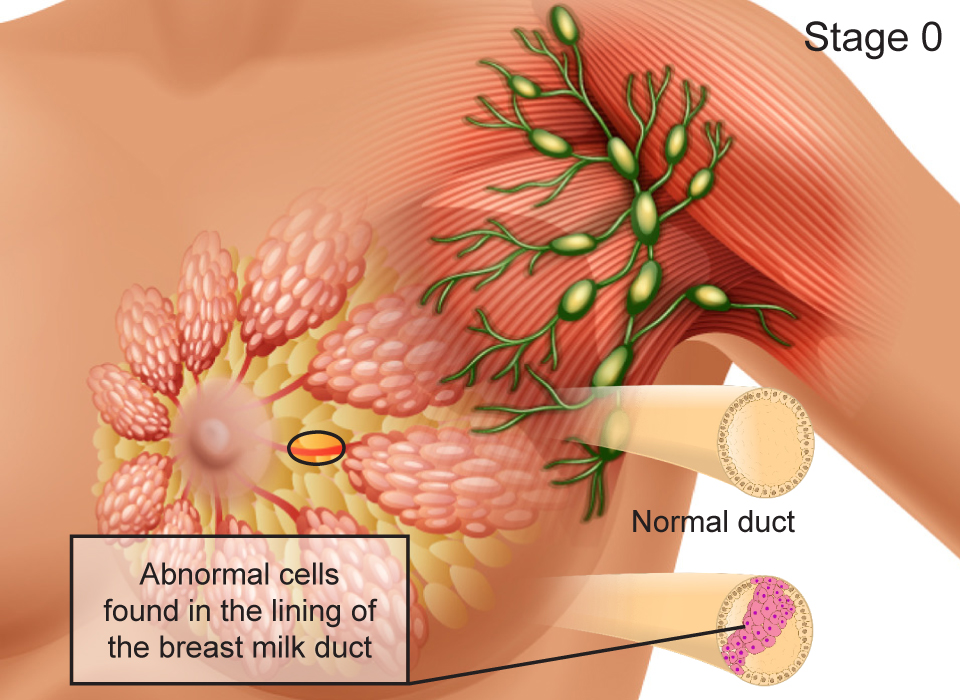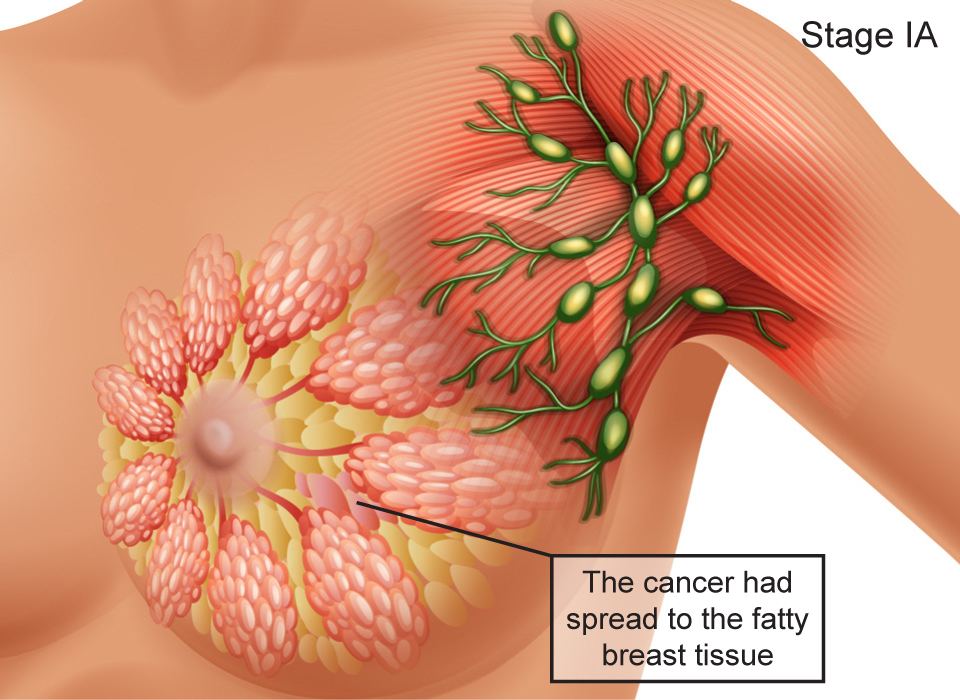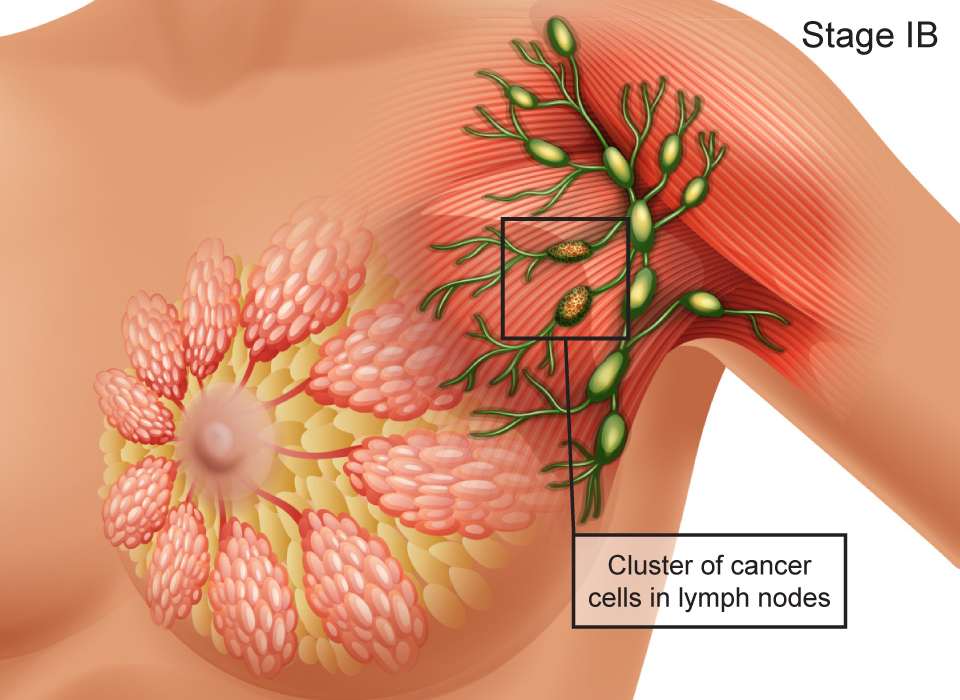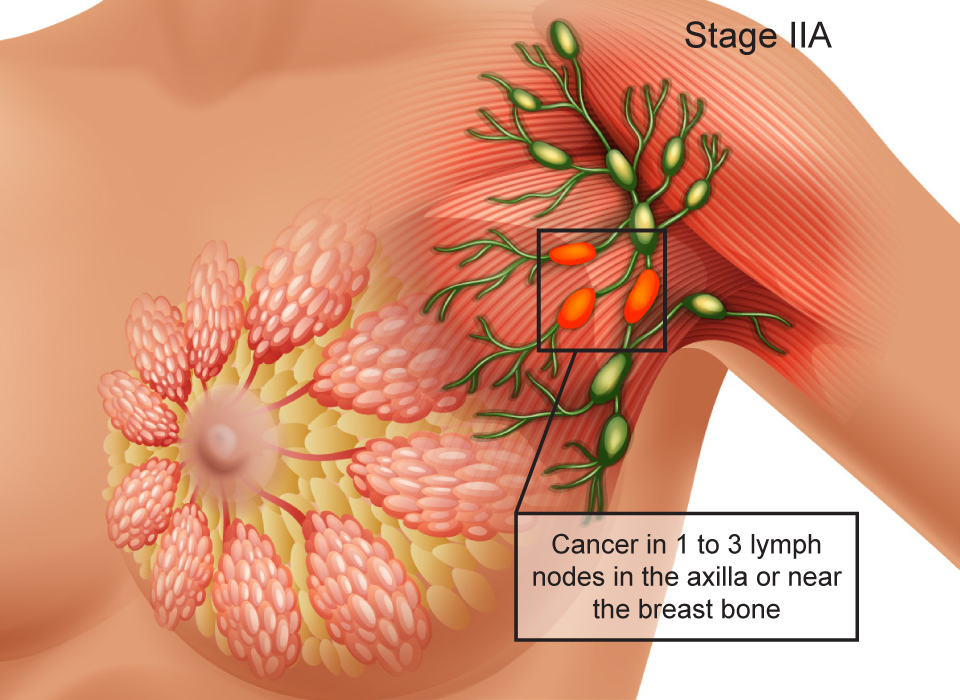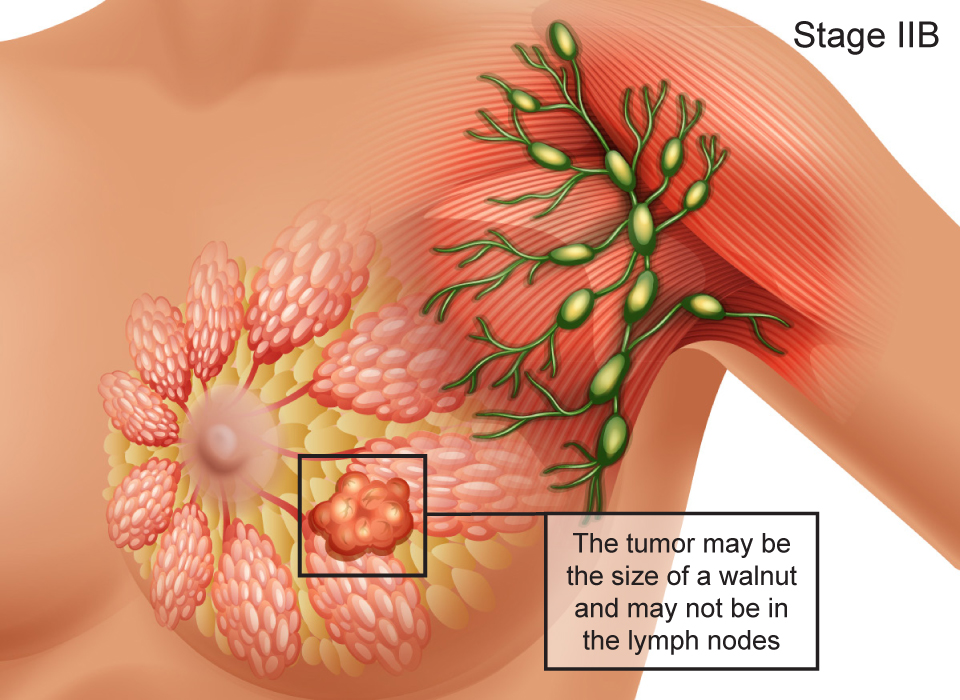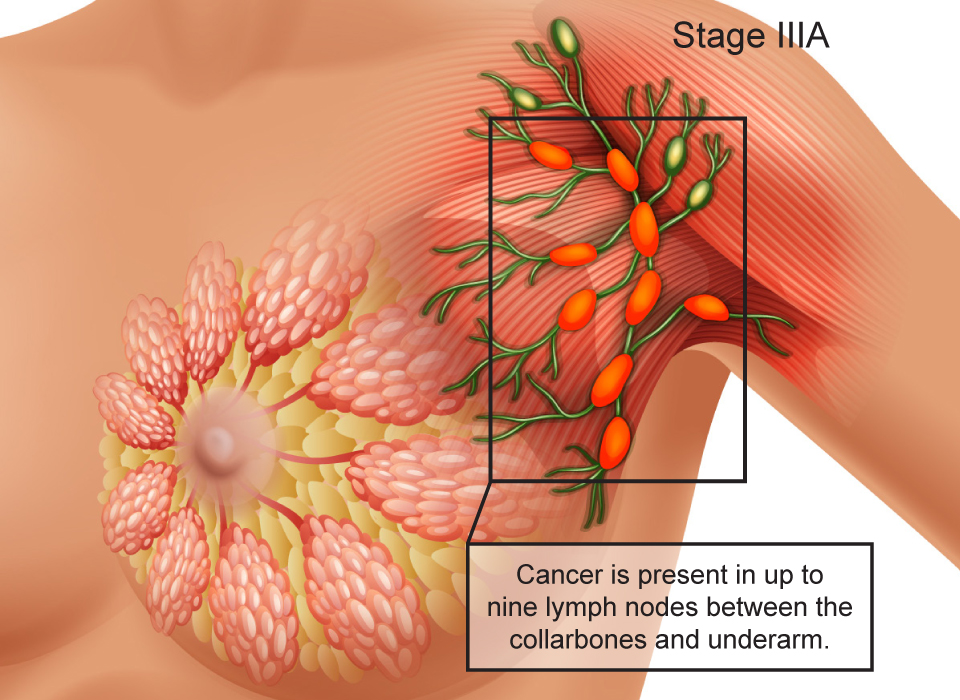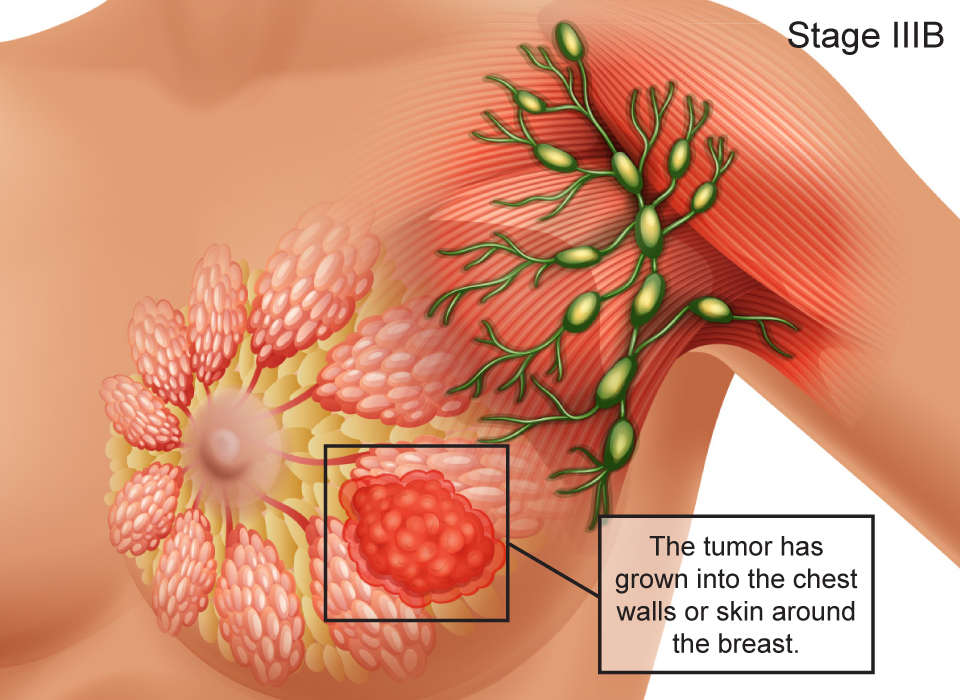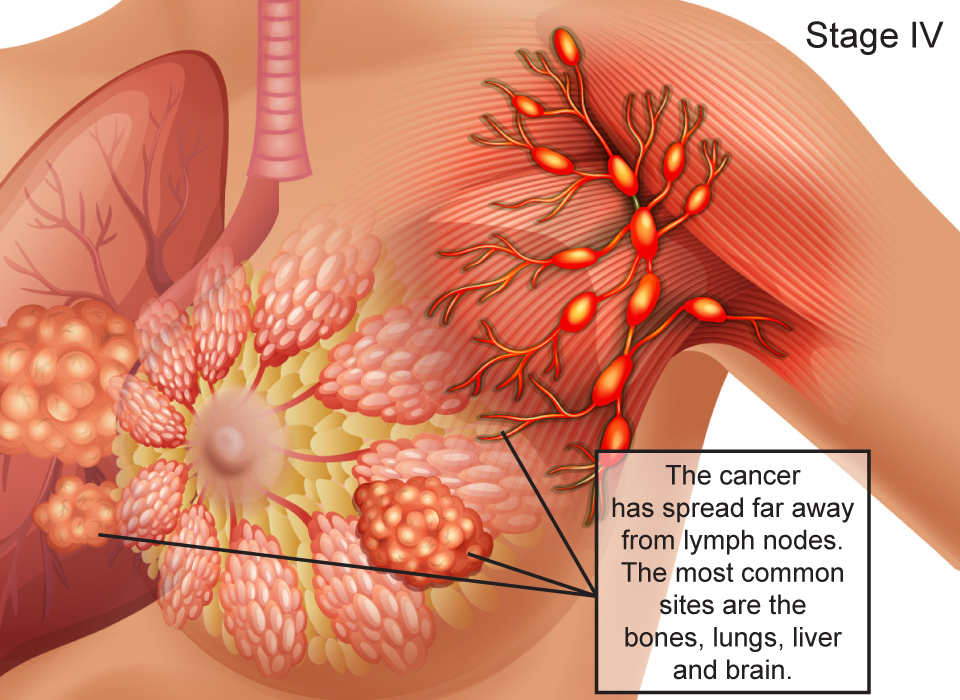
Breast1
A woman’s breast are formed with glands and tissues, for example:
- Lobules that produce breast milk
- Ducts, that carry milk from the lobules to the nipple
- Fatty and connective tissue, and
- Blood vessels and lymph vessels
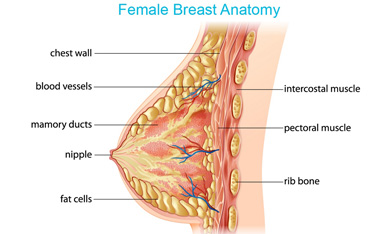
About breast cancer 1
Breast cancer is a malignant growth or tumor beginning at the breast cells resulting from an uncontrolled division of cells which can invade into neighbouring tissues or spread (metastasize) to different parts of the body. The most common invasive cancer among women worldwide predominantly begins in the cells lining the ducts (ductal carcinoma). Sometimes breast cancer begins in the cells lining the lobules (lobular carcinoma), and in very few cases it starts in other tissues. There are different factors that contribute to the cause of this disease, such as genetics, obesity, exposure to radiation, dense breast tissue and estrogen exposure, to name a few.
Risk factors2
- This disease is almost 100 times more common in women than in men
- The risk of acquiring breast cancer increases with age. Nearly 2 out of 3 breast cancer patients are older than 55 years of age
- The risk of breast cancer is nearly doubled among those whose blood relatives (like mother, sister or daughter) have the disease
- Nearly 5 - 10% of breast cancer cases are inherited from the parent, which means they are hereditary in nature
- The risk of developing a new cancer in another part of the breast, or the other breast is increased among women who are already diagnosed with breast cancer (this is not the same as recurrence or return of the first cancer)
- Exposure to radiation (especially through chest x-rays) during adolescence, increases the risk of developing breast cancer
- The risk of developing breast cancer is slightly increased among women who have their first child after 30 years of age
- Women using combined hormone therapy after menopause are thought to have a higher risk of getting breast cancer than women who don’t use the therapy
- Excessive alcohol consumption is associated with increased risk of developing cancer
- Women who are overweight after menopause are at a higher risk of getting breast cancer due to increased estrogen levels and increased insulin
Symptoms3
- New lump(s) or area(s) of thickened tissue in the breast(s)
- Swelling in the breast(s)
- Pain in the breast or nipples
- Skin rash, scaly or patchy skin around the breast or nipples
- Discharge from the nipple (other than breast milk) or change in the shape of nipples, like inverted or sunken nipples
- Dimpling or puckering around the nipple(s) or on the breast skin
Importance of screening for early detection
Screening tests (like mammograms) are crucial because they help in early detection of breast cancer, even before the symptoms set in. Early detection significantly increases the chance of curing breast cancer. 4
Mammogram is yet another effective way of detecting breast cancer symptoms. It is a special type of X-ray that captures images of the breast tissue to help detecting tumors. It is suggested that women of 40+ years of age should undergo annual breast cancer screening with mammograms.
Self-examination5
Regular self-examination of breasts is an effective way to detect signs of cancer. The best time to practice self-examination is 3-5 days after the menstrual cycle begins. During the menopause phase, self-examination can be done on the same day of the month.
How to conduct self-examination:
1. Examine if the breasts and nipples are their usual size, shape and color in the mirror. Also examine if there is any swelling, redness and rashes on the breast skin. Also look for any change in the position of the nipples.

2. Stretch arms over the head and examine breasts in the mirror once again for the same signs as mentioned above.
3. Check for any fluid discharge from the nipples (watery, milky, yellow fluid or blood).
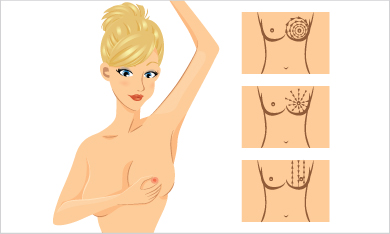
4. Lay on your back to examine breasts. Use the right hand to examine the left breast, and vice-versa. Keep fingers flat together and use circular or vertical motion to examine the entire breast from the collarbone to the waist and from the armpit to the cleavage.
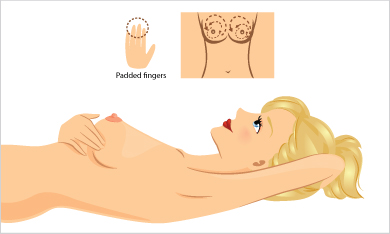
5. Examine breasts while standing or sitting down, by following the method mentioned in step 4.
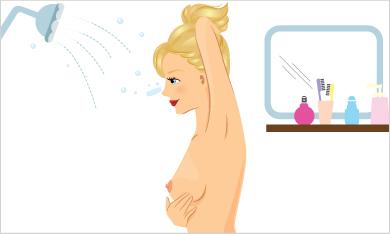
Stages of breast cancer6
If diagnosed with breast cancer, it is important to determine the stage of cancer so that appropriate medical treatment can be provided by doctors. Breast cancer is usually classified into 4 stages. These stages are further divided into sub categories within them and are classified using alphabets.
Stage 0
It is called ‘situ’, means “in the original place”, referring to the fact that the cancer has stayed in the milk glands or ducts of the breast where it has started.
Stage I
This level onwards the cancer becomes invasive, or to say it breaks free and can attack healthy tissue.
- IA: The cancer spreads to the fatty breast tissue
- IB: Very small amounts of cancer cells may be found in few lymph nodes
Stage II
The cancer grows and/or spreads
- IIA: If there is a tumor in the breast then it is still small. Up to 3 lymph nodes may be affected.
- IIB: The tumor may be the size of a walnut and may not be in the lymph nodes.
Stage III
The cancer is harder to fight at this stage though no organs or bones have been affected.
- IIIA: Cancer is present in up to 9 lymph nodes between the collarbones and underarm, or it spreads to or enlarges the lymph nodes in the breast. In some cases there may also be a tumor.
- IIIB: Even if it has not spread to the lymph nodes, the tumor has grown into the chest walls or skin around the breast.
- IIIC: The cancer spreads to 10 or more lymph nodes, has spread above or below the collarbone or even if fewer lymph nodes are affected outside but those inside the breast are enlarged or cancerous.
Stage IV
When the cancer spreads far away from lymph nodes. The most common sites are the bones, lungs, liver and brain
Treatment options7
There are numerous treatment options available for breast cancer patients. The 5 types of standard treatment options for breast cancer include:
- Surgery
- Radiation therapy
- Chemotherapy
- Hormone therapy
- Targeted therapy
Precautions8, 9, 10
While suffering from any illness, it is important to maintain proper hygiene. As the immune system is vulnerable during treatment it is essential to take precautions to avoid more infections. Some vital habits to meticulously follow are:
- Washing/wiping/sanitizing hands regularly
- Maintaining a balanced diet to ensure that all essential nutritional requirements are met
- Drinking a minimum of 8 to 10 glasses of water in a day
- Avoiding alcohol consumption
- Ensuring adequate fluid intake
- Exercising regularly as per the doctor's’ guidance
- Nourishing and cleaning the skin by exfoliation and moisturization
Reference
1 American Cancer Society. What is breast cancer? [Internet]. Atlanta, Georgia, United States: American Cancer Society; 2015 [updated 2015 September 25; cited 2015 November 15]. Available from: http://www.cancer.org/cancer/breastcancer/detailedguide/breast-cancer-what-is-breast-cancer
2 American Cancer Society. What are the risk factors for breast cancer? [Internet]. Atlanta, Georgia, United States: American Cancer Society; 2015 [updated 2015 October 18; cited 2015 November 15]. Available from: http://www.cancer.org/cancer/breastcancer/detailedguide/breast-cancer-risk-factors
3 American Cancer Society. Signs and symptoms of breast cancer [Internet]. Atlanta, Georgia, United States: American Cancer Society; 2015 [updated 2015 October 25; cited 2015 November 15]. Available from: http://www.cancer.org/cancer/breastcancer/detailedguide/breast-cancer-signs-symptoms
4 American Cancer Society. Can breast cancer be found early? [Internet]. Atlanta, Georgia, United States: American Cancer Society; 2015 [updated 2015 September 27; cited 2015 November 15]. Available from: http://www.cancer.org/cancer/breastcancer/detailedguide/breast-cancer-detection
5 Breastcancer.org. The Five Steps of a Breast Self-Exam [Internet]. Ardmore, Pennsylvania, United States: Breastcancer.org; 2015 [updated 2015 October 28; cited 2015 November 19]. Available from: http://www.breastcancer.org/symptoms/testing/types/self_exam/bse_steps
6 WebMD, Reviewed by Jennifer Robinson, MD (February 17, 2015) {Internet]. What Are the Stages of Breast Cancer? New York City, New York, United States: WebMD; 2015 [updated 2015 September 30; cited 2015 November 18]. Available from: http://www.webmd.com/breast-cancer/guide/stages-breast-cancer?page=1#1
7 National Center for Biotechnology Information, U.S. National Library of Medicine. Tests that examine the breasts are used to detect (find) and diagnose breast cancer [Internet]. Bethesda, Maryland, United States: National Center for Biotechnology Information, U.S. National Library of Medicine; 2015 November 4 [updated 18 February 2014; cited 18 November 2015]. Available from: http://www.ncbi.nlm.nih.gov/pubmedhealth/PMH0032825/#CDR0000062955__140
8 University of California San Francisco. Breast Cancer Self-Care and Recovery: Nutrition [Internet]. San Francisco, California, United States: University of California San Francisco; 2002 [updated 29 October 2015; cited 16 November 2015]. Available from: http://www.ucsfhealth.org/education/breast_cancer_self-care_and_recovery/nutrition/index.html
9 American Society of Clinical Oncology. Tips for coping with the fear of recurrence [Internet]. Alexandria, Virginia, United States: American Society of Clinical Oncology; 2005 [updated 2015 September 7; cited 2015 November 16]. Available from: http://www.cancer.net/survivorship/life-after-cancer/coping-fear-recurrence
10American Cancer Society. Can I get another cancer after having breast cancer? [Internet]. Atlanta, Georgia, United States: American Cancer Society; 2015 [updated 2015 September 27; cited 2015 November 15]. Available from: http://www.cancer.org/cancer/breastcancer/detailedguide/breast-cancer-after-second-cancers
Disclaimer
Mylan makes no representations or warranties, express or implied, as to the accuracy or completeness of the information provided on this website and disclaims any liability for the use of this website or any site linked to it. Mylan retains the right to change the content of this website at any time without notice but does not assume any responsibility to update it. Neither Mylan nor any other partner involved in creating, producing or delivering this website is liable in any manner whatsoever for any direct, incidental or consequential, indirect or punitive damages arising out of any access, use or inability to use this website, or any errors or omissions in the content thereof. Nothing contained in this website should be construed as medical, legal, investment, financial or other advice. Without limitation, nothing contained in this website should replace medical advice, medical visits or recommendations from health care providers. Access and use of any information or content on this website shall be at one’s own risk.

